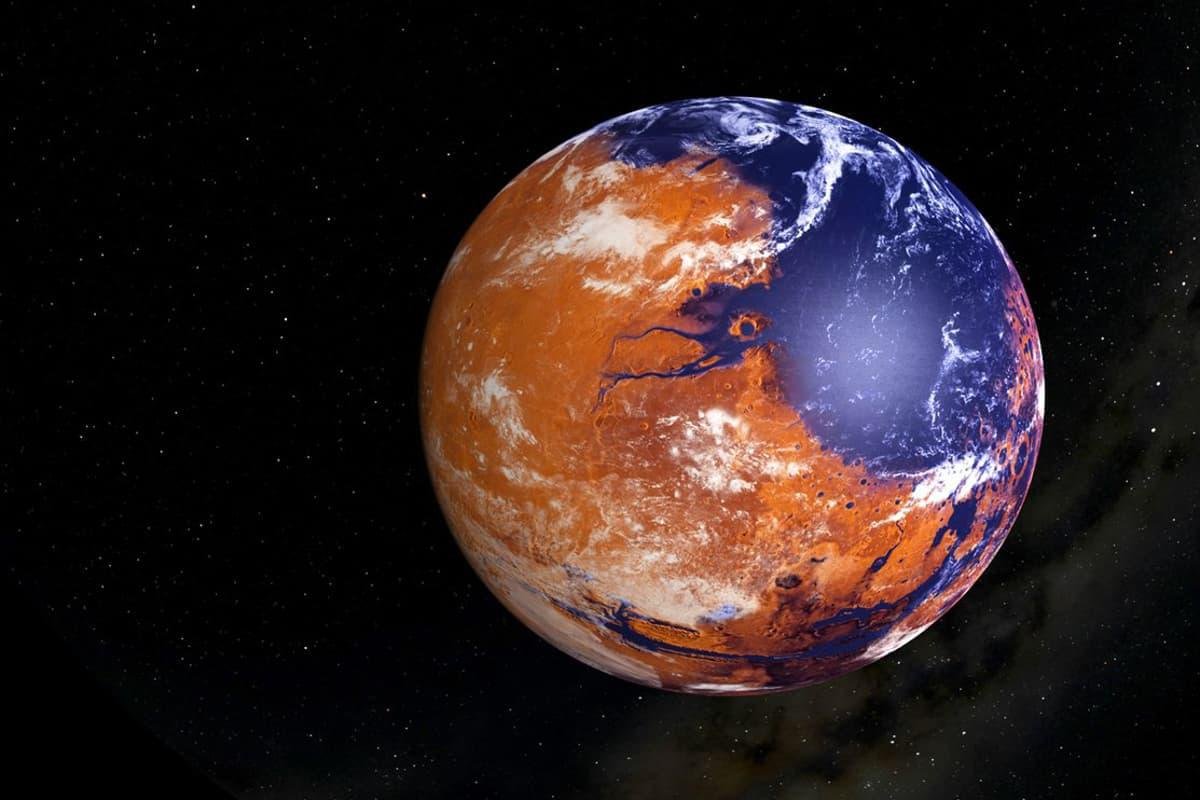Considered “sister planets” due to some fundamental similarities such as rotation and axis, size, and rock composition, differences in climate between Mars and Earth have long intrigued scientists. These distinctions are what currently drives much of the scientific research on the Red Planet..
One such probe, NASA’s Curiosity rover, currently based in Gale Crater at the Martian equator, has provided some never-before-seen details about how Mars’ ancient climate was potentially suitable for life; These include the presence of liquid water on its surface and the presence of a hostile desert. Life evolved under terrestrial conditions.
In a study published in the journal Proceedings of the National Academy of Sciences (PNAS), researchers used Curiosity’s instruments to create an isotopic composition of the crater’s carbonates (carbon-rich materials). Different numbers of neutrons and isotope atoms of the same element provide information about the origin, physical processes and environmental conditions of the formation of these substances.
Isotopic analysis of climate history on Mars
The choice of carbon isotopes on Mars was not a coincidence. Carbon, an essential element for life, is an important marker when it comes to climate records. These minerals can preserve traces of their original context of formation, including the temperature and acidity of the water and the chemical composition of the water and atmosphere.
The research follows these principles: As water evaporated, lighter versions of carbon and oxygen were more likely to escape into the atmosphere; heavier versions mixed into carbonate rocks at the surface.
After reading the article, two possible processes of carbonate formation in Gale are suggested. The first points to a scenario where carbonates form through a series of wet-dry cycles within a Martian crater. In the second, carbonates form in very salty water under cold ice-forming (cryogenic) conditions inside the crater.
Two suggestions about the climate of Mars

Each formation mechanism represents a different climate regime, co-author Jennifer Stern, a planetary geochemist at NASA’s Goddard Space Flight Center in Maryland, explains in a statement. These, in turn, could affect the habitability of the planet over time.
The wet-dry cycle thus suggests alternating periods between more and less favorable conditions for life. During wet phases, liquid water may be present at the surface or in subsurface layers, which is necessary for the existence of chemical and biological processes that sustain life.
Cryogenic conditions, which predominate in the mid-latitudes of Mars, refer to extremely cold temperatures where most of the water is trapped in the form of ice. Besides, The fact that this water is highly salty makes the environment unsuitable for the formation of life as we know it..
Comparison of Mars Isotopes with Earth Isotopes

Martian carbonates have significantly higher carbon and oxygen isotope values than those found on Earth. According to the authors, are the highest values ever recorded for any known Martian materialThis is an indication that unique environmental or geological processes have influenced the formation of these minerals on the planet.
These exceptional isotope values indicate intense evaporation that is two to three times greater than those observed on Earth, according to NASA Goddard’s David Burtt, first author of the paper. This density explains the enrichment in heavy isotopes and their preservation, indicating that processes that can create lighter isotopes have less impact or intensity on Mars.
Although wet-dry and cold-saline climate scenarios have already been proposed for the ancient Red Planet based on modeling and minerals, this study is the first to provide direct isotopic evidence. Analyzes of rock samples confirm previously proposed climate models.
Do you have any questions? Tell us on our social networks and get the opportunity to share the article with your friends who like these topics. Until later!
Source: Tec Mundo
I’m Blaine Morgan, an experienced journalist and writer with over 8 years of experience in the tech industry. My expertise lies in writing about technology news and trends, covering everything from cutting-edge gadgets to emerging software developments. I’ve written for several leading publications including Gadget Onus where I am an author.












